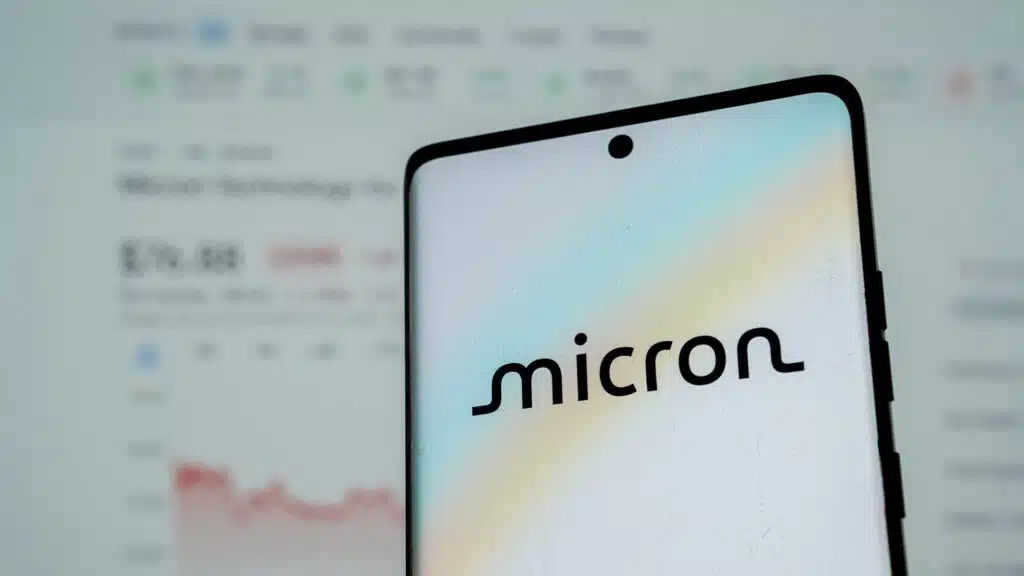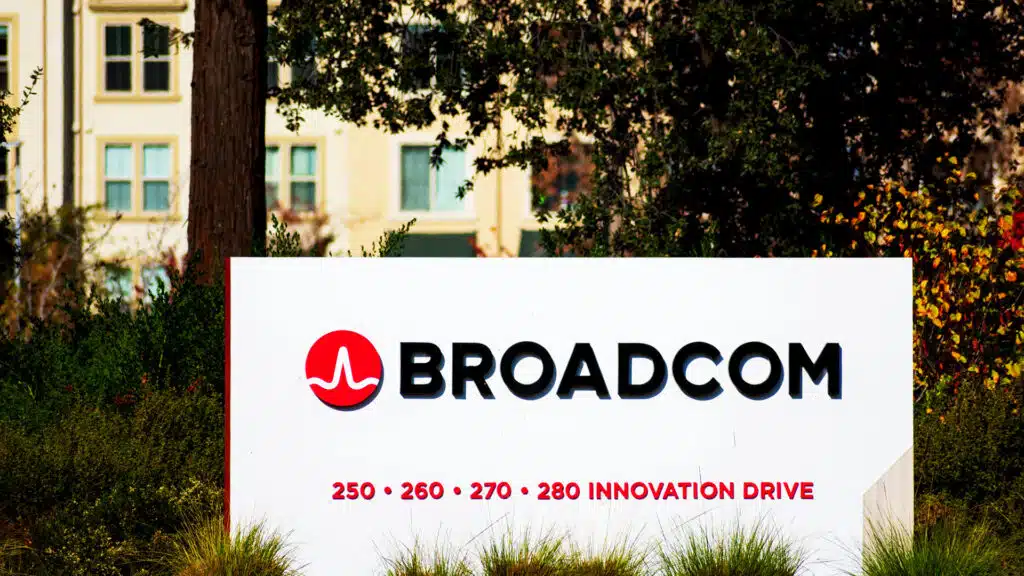Analyst(s): Ray Wang
Publication Date: July 1, 2025
Micron’s record-setting Q3 revenue was propelled by record-high DRAM sales and exceptional HBM demand in data center markets, reinforcing its technology leadership in the memory landscape in the era of AI.
What is Covered in this Article:
- Q3 FY 2025 financial results and year-over-year growth highlights.
- Data center and HBM segment momentum with robust AI-driven demand.
- Advancements in DRAM Technology and NAND Products
- DRAM leadership and competitive positioning across data center and client SSD markets.
- Forward-looking guidance for Q4 and management’s expectations for ongoing AI-driven growth.
The News: Micron Technology, Inc. (Nasdaq: MU) delivered record fiscal Q3 2025 revenue of $9.30 billion, up 15 % from $8.05 billion in Q2 2025 and 37 % above the $6.81 billion booked a year earlier. Non-GAAP net income climbed to $2.18 billion, a 23 % sequential increase from $1.78 billion and more than triple last year’s $702 million. The non-GAAP gross margin widened to 39.0 %, versus 37.9 % in the prior quarter and 28 % in Q3 2024.
In Q3, DRAM revenue reached $7.1 billion, up 51 % year over year and accounting for 76 % of total revenue. Sequentially, DRAM sales rose 15 %, with bit shipments increasing more than 20 % and average selling prices slipping in the low-single-digit range due to a higher mix of consumer-oriented products. NAND revenue was $2.2 billion, up 4 % year over year and contributing 23 % of total revenue.
“In fiscal Q3, DRAM revenue reached a new record, driven by a nearly 50% sequential growth in HBM revenue. We remain the sole supplier in volume production of LPDRAM in the data center. In NAND, we achieved a new quarterly record for market share across data center SSDs, as well as client SSDs in calendar Q1,” said Sanjay Mehrotra, CEO and President of Micron Technology.
“We are on track to deliver record revenue with solid profitability and free cash flow in fiscal year ’25, while we invest to build on our leadership to addressing growing AI-driven memory demand,” Sanjay added.
Micron Technology Q3 FY 2025 Earnings Show Strong Data Center and HBM Growth
Analyst Take: Micron’s Q3 performance reflects the company’s strong alignment with accelerating AI and data center trends, translating into exceptional DRAM and HBM growth and solidifying its leadership in memory technology.
HBM and Data Center Continue to Drive Significant Growth
Micron’s HBM remains the primary catalyst for the growth of its DRAM business. Management indicated the HBM portfolio exited 3Q25 at a revenue run-rate exceeding $6 billion. Its advancement in the HBM business is one of the key reasons Micron achieved 50% sequential growth and notable growth in its DRAM business over the past several quarters. The company’s data center DRAM revenue has reached a new record for the fourth consecutive quarter.
Micron’s success in HBM is built on its execution of the technology roadmap against the backdrop of strong memory demand from customers in HPC. Management has stated that the HBM3E 12hi’s volume production and yield ramp “is progressing extremely well,” which will continue to contribute to Micron’s DRAM business in the next few quarters. We believe Micron should continue to be a key beneficiary of strong AI demand as HBM continues to be the bottleneck in AI compute. In addition, Micron’s upcoming HBM4 is also on track. Micron also began to sample its HBM4 products, aiming for mass production in 2026.
Looking ahead, the volume production ramp of 12-high HBM3E through 2H25 and into 2026 should progressively dominate the mix of HBM, with HBM4 likely adding to the mix later in 2026. Contributions from 8-high HBM3E and residual HBM3 should gradually reduce.
Some investors worry that Samsung might secure Nvidia qualification for its HBM3E 12hi and pressure Micron’s pricing. We think the risk is overstated for now. Nvidia, the biggest buyer in the HBM market, has withheld certification for more than 12 months against Samsung’s HBM3E 12hi, implying the technical hurdles Samsung still faces. The approval has already been postponed several times and was recently pushed back to September.
Similar anxieties surface around Micron’s HBM4 roadmap against Samsung, yet we remain reserved for Samsung to deliver meaningful HBM4 volumes in the near term. Despite some recent improvements, Samsung is still working through yield-maturity issues on the 1c nm DRAM needed for HBM4. Based on our research, Micron will still have to compete with market leader SK Hynix in HBM4, which will likely be the earlier HBM4 supplier in the market.
Advancements in DRAM Technology and NAND Products
On the traditional DRAM, Micron shows a strong yield ramp on its 1-gamma (1γ) DRAM node and first qualification sample shipments of 1γ-based LP5 DRAM. “We are making excellent progress on our 1-gamma DRAM technology node, with yields ramping ahead of the record pace we have achieved on our 1-beta (1β) node. We completed several key product milestones during the quarter, including the first qualification sample shipments of 1-gamma based LP5 DRAM,” said Sanjay.
Moreover, the company also advanced its NAND portfolio with a record mix of QLC bits and started qualifications for new high-performance SSDs (9 2-terabit QLC NAND). The company is also ramping up G9 nodes “at a pace consistent with demand.”
Besides, Micron’s 9550 performance SSD, which is designated for the data center and listed on the NVIDIA GB200 NVL72 recommended vendor list, has completed additional customer qualifications at multiple OEMs. This could be another overlooked opportunity for Micron to grow in the data center.
DRAM Leadership and Competitive Positioning Across Data Center and Client SSD Markets
Taken together, we believe Micron’s position in both HBM and DRAM is very competitive. The record-high DRAM revenue (including HBM) and market share in data center and client SSDs indicate its competitiveness against other memory players. The company became the No.2 brand by share in data center SSDs for the first time ever and remains the sole supplier in volume production of LP server DRAM. Integrating high-capacity DIMMs and LP server DRAM into AI data centers reflects Micron’s ability to meet a market that demands ultra-performance, power, and scalability.
Guidance and Final Thoughts
Looking ahead to fiscal Q4 2025, Micron guides to another record quarter with revenue expected to reach $10.7 billion, about 15 % sequential growth, with further margin improvement to 42% fueled by sustained demand in AI, data-center, and HBM markets. We remain confident in Micron’s trajectory, as its core DRAM franchise continues to capitalize on surging compute requirements for GPUs and ASICs due to AI inference. Three key things to watch moving forward are: 1) the Company’s ramp-up production and shipment of HBM3E 12hi to its major customers in the coming months. 2) Samsung’s certification timeline for HBM3E 12hi and HBM4 development. 3) Overall DRAM market cycle and compute demand in the market.
Read the full press release on Micron Technology’s website.
Disclosures: During the preparation of this work, the author(s) used ChatGPT in order to collect financial data. After using this tool/service, the author(s) reviewed and edited the content as needed and take full responsibility for the publication’s content.
Futurum is a research and advisory firm that engages or has engaged in research, analysis, and advisory services with many technology companies, including those mentioned in this article. The author does not hold any equity positions with any company mentioned in this article.
Analysis and opinions expressed herein are specific to the analyst individually and data and other information that might have been provided for validation, not those of Futurum as a whole.
Other insights from Futurum:
Marvell Advances Chip-Level Power Integration for AI and Cloud Efficiency
Will Coherent’s Air-Cooled Laser Raise the Bar in Polymer Welding?
Marvell Expands Custom AI Portfolio With Launch of 2nm Custom SRAM
Author Information
Ray Wang is the Research Director for Semiconductors, Supply Chain, and Emerging Technology at Futurum. His coverage focuses on the global semiconductor industry and frontier technologies. He also advises clients on global compute distribution, deployment, and supply chain. In addition to his main coverage and expertise, Wang also specializes in global technology policy, supply chain dynamics, and U.S.-China relations.
He has been quoted or interviewed regularly by leading media outlets across the globe, including CNBC, CNN, MarketWatch, Nikkei Asia, South China Morning Post, Business Insider, Science, Al Jazeera, Fast Company, and TaiwanPlus.
Prior to joining Futurum, Wang worked as an independent semiconductor and technology analyst, advising technology firms and institutional investors on industry development, regulations, and geopolitics. He also held positions at leading consulting firms and think tanks in Washington, D.C., including DGA–Albright Stonebridge Group, the Center for Strategic and International Studies (CSIS), and the Carnegie Endowment for International Peace.







